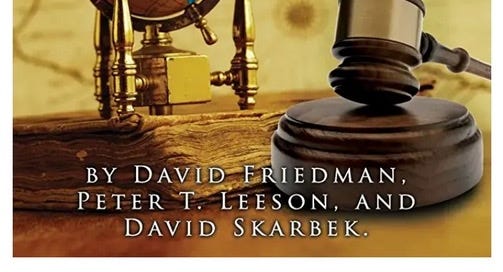Introduction: Land Use Regimes Very Different From Ours (Ep 0)
On why white-passing people could attend to importing better cultural norms
A few years ago I read a book that I couldn't unread. It’s title is:
Legal Systems Very Different From Ours
Here’s it’s Goodreads page. It’s available on the author’s website, for free, chapter by chapter.
It expresses, in detail, that when confronted with a particular 'social challenge', different communities solve given problems in different ways.
Notably, some of those problem solving strategies seem dramatically less onerous and result in less harm than some other problem solving strategies.
The USA, and the western way as a whole, prizes certain forms of the written word, and since english dominates, these systems combine to give a myopic view of certain bits of social infrastructure, lending a sense of permanence and comprehensiveness to certain institutions.
This Zoning Very Different Than Ours periodical is dedicated to highlighting at least some of the ways that other norms relative to land use and mobility networks might lead to generally nice outcomes for the involved people.
Also, land use policies in the USA were chosen, explicitly for purposes of social control1. But because of how politically dicey this strategy can, there were sometimes layers of misdirection piled atop the policies.
So, as we go, we'll start with talking about the origins of some seemingly arcane land use policies. Eventually we’ll move to what else could be, for example, Congestion As Solvable, Part 3: Intro To Path Shaping.
If you want to skip to the end, and get a high-level answer to the question
What should be implemented in a city if not ethnic cleansing and regimes of social control?
The answer to this question is answered in Alain Bertaud’s book, an urban economics approach to infrastructure planning.
If I am successful, you'll begin to see the city you live in and places you travel to and through differently than you do now. I hope you’ll see the potential for beauty and rest and peacefulness more and more, and eventually expect the world to bend to your preferences. If enough people expect the right kind of change, it is much more likely to happen.
Here’s an overview of the whole substack, it’s sometimes up to date:
The next episode: Parking Minimums as Ethnic Cleansing.
After that, Setbacks as Ethnic Cleansing.
Next, 35' Height Restrictions as Ethnic Cleansing.
If you’re not sick of me at that point we switch gears to examining mobility networks, with Arterials as Walls as Ethnic Cleansing and Noise, Overt Aggression and Intimidation in Vehicle Design and Vehicle Operator Behavior as Ethnic Cleansing.
We take a break (sorta) from ethnic cleansing in episode 6, Interlude: A Pattern of Repair, about an intersection in Poynton, England, where a given intersection faced a common American-style problem, and is quite repaired.
I then begin a series on ‘traffic congestion as solvable’, part 1, part 2, part 3.
👋, Josh




